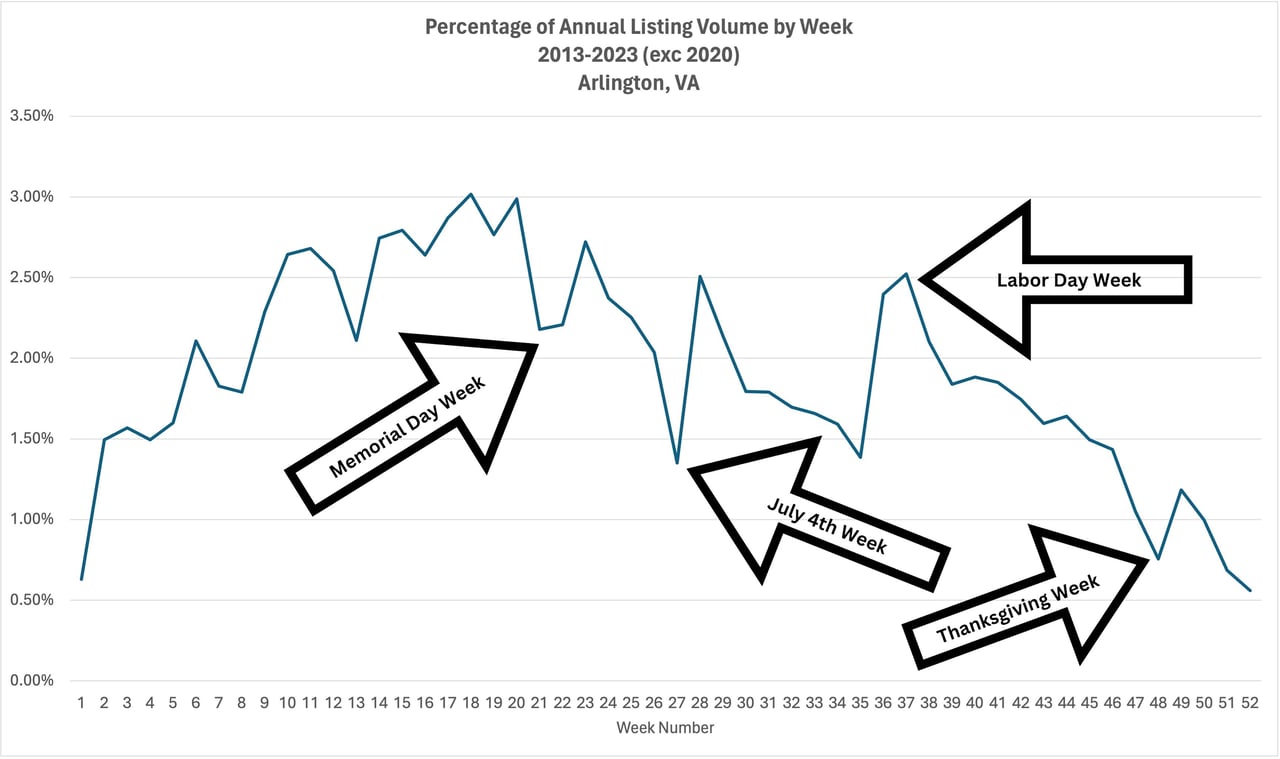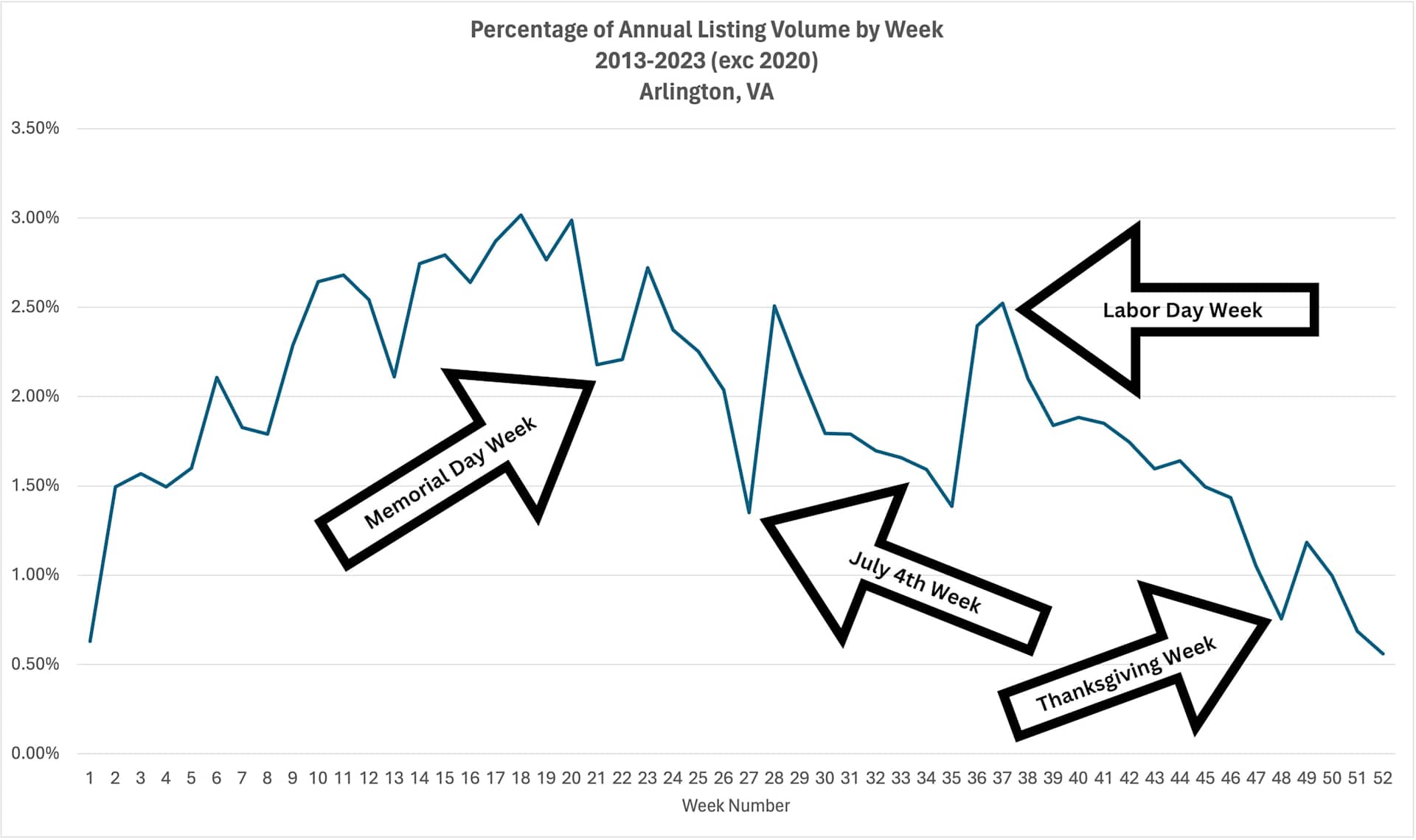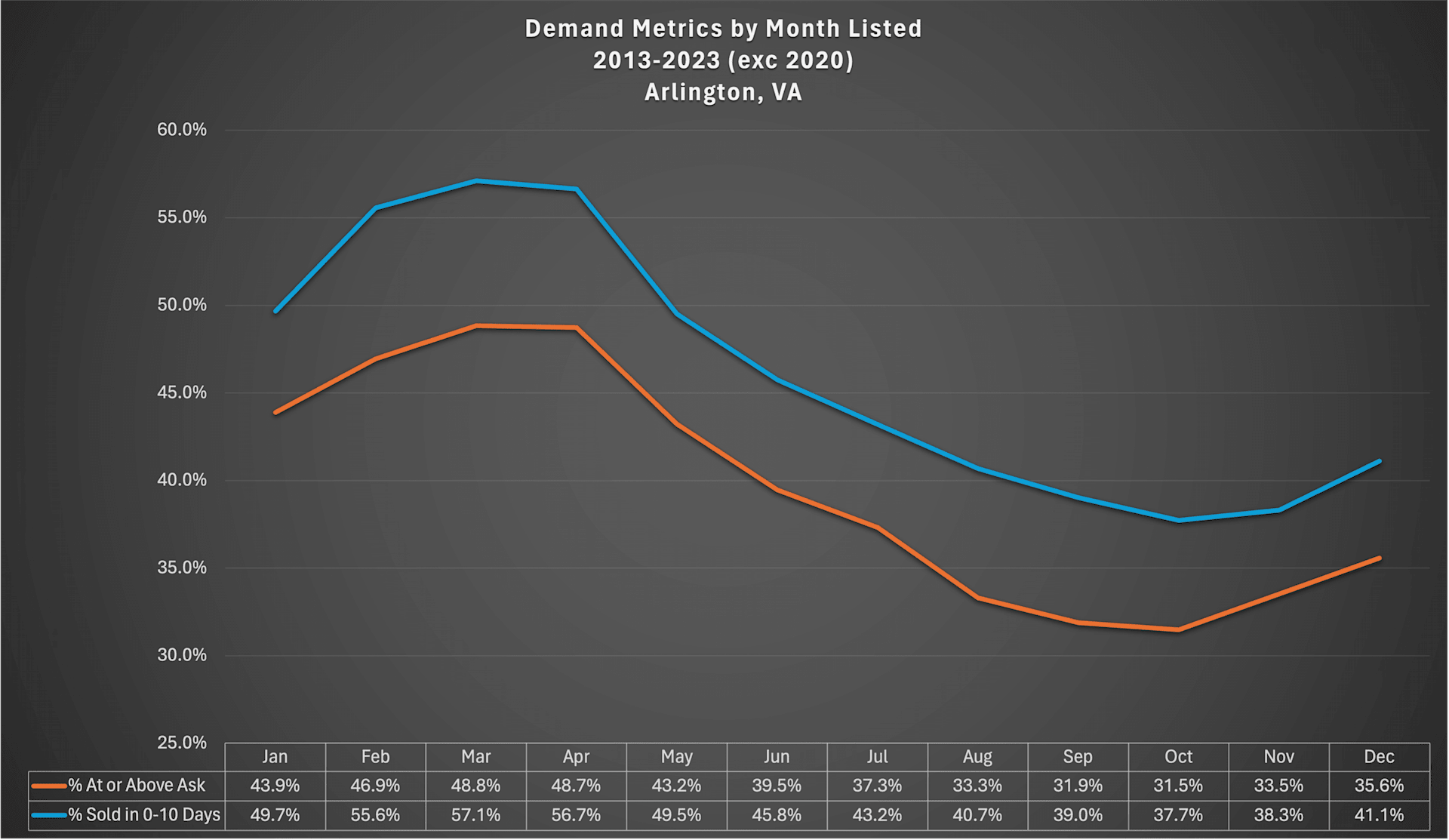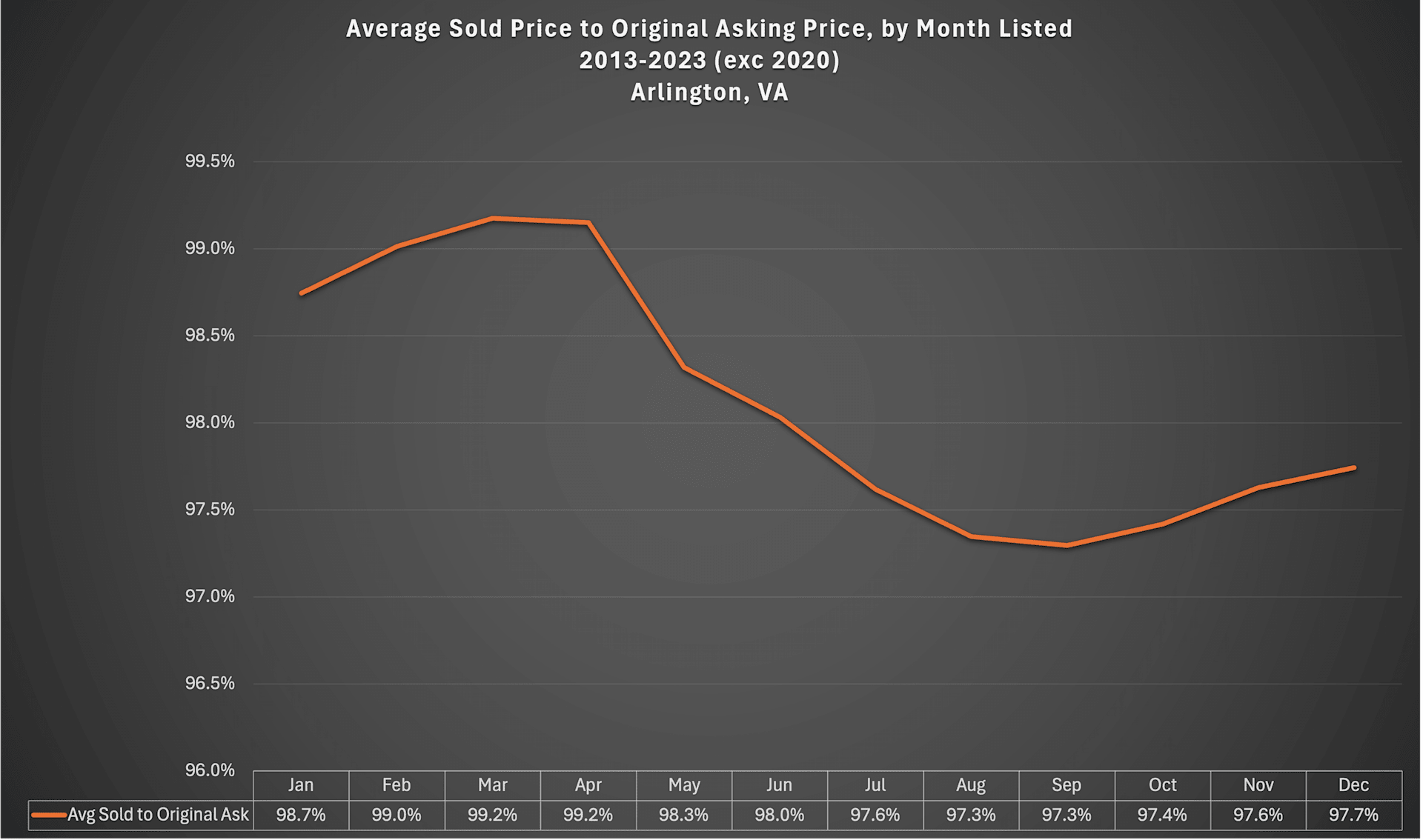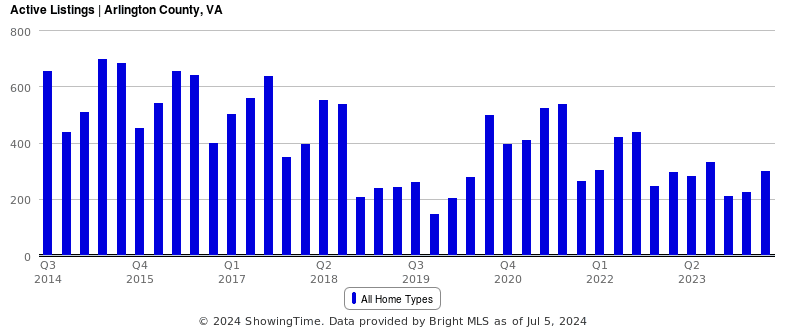Question: What do you expect to see from the real estate market for the remainder of the year?
Answer: Following a strong first half for single-family homes and an exceptionally strong first half for condos, let’s take a look at what historical trends tell us we can expect from the local real estate market for the rest of the year. Having a strong understanding of weekly and monthly fluctuations in market conditions can give buyers and sellers a competitive advantage over the rest of the market and prevent costly mistakes based on inaccurate assumptions.
While the specific data/conditions vary year-to-year based on things like inventory levels, interest rates, and economic conditions, we can rely on trends as we move through the seasons and hit certain transition points (usually marked by major holidays) throughout the year. The charts below are made up of sales in Arlington since 2013 (excluding 2020 because of COVID lockdowns) and the trends can generally be applied to markets in the greater DC area, not just Arlington.
Inventory Will Spike Soon, Then Fall Sharply
The summer months are defined by a shift in demand (lower) and listing volume (lower) relative to the peak spring activity. A lot of homeowners wait to put their home on market until after Labor Day, the unofficial end of summer, so we usually see listing activity spike the week following Labor Day Weekend; producing roughly double the volume of listings in the following week or two relative to the preceding and proceeding weeks.
Buyers will observe a sharp decrease in new listing volume on a weekly basis through the end of the year, following the Labor Day spike. Listing volume will not accelerate again until mid-January, except for a small pop after Thanksgiving.
Intensity of Demand and Pace of Market Will Continue to Slow
If you’ve been active in the market since earlier this year, you’ve likely noticed a deceleration in the intensity of demand (number of competing offers, amount of escalation over asking) and pace of market (more homes sitting through the first week on market).
The demand metrics I like to measure are the percentage of homes selling at or above asking and percentage of homes sold in the first ten days on market (first chart) as well as the average sold price to the original asking price (second chart).
You’ll see from the charts below, based on the month a home was listed for sale, all three demand measures follow a similar trend through the year with the most difficult months for buyers being homes listed February-April and some of the best months for buyers being homes listed in August and September. In general, the entire second half of the year is easier on buyers, but comes at the cost of seeing fewer homes listed for sale.
Don’t Expect a Soft Market at Any Point
Do not confuse a softer market with a soft market. The former is relative to earlier this year and the latter would suggest that market conditions favor buyers. We are operating in an undersupplied market (see chart below) and even though the coming months will be easier on buyers than the spring market, you can expect difficult, competitive market conditions to prevail. This will hold especially true if recent drops in interest rates hold or continue.
As you review the demand charts above and consider the effect they’ll have on your sale/purchase, remember that the data goes back to 2013, which includes more tame years. Focus on the trends and apply them relative to this year’s market conditions. Let me know if you’d like customized data sets that are more focused on the sub-market you are buying or selling in.
If you’d like to discuss buying, selling, investing, or renting, don’t hesitate to reach out to me at [email protected].
